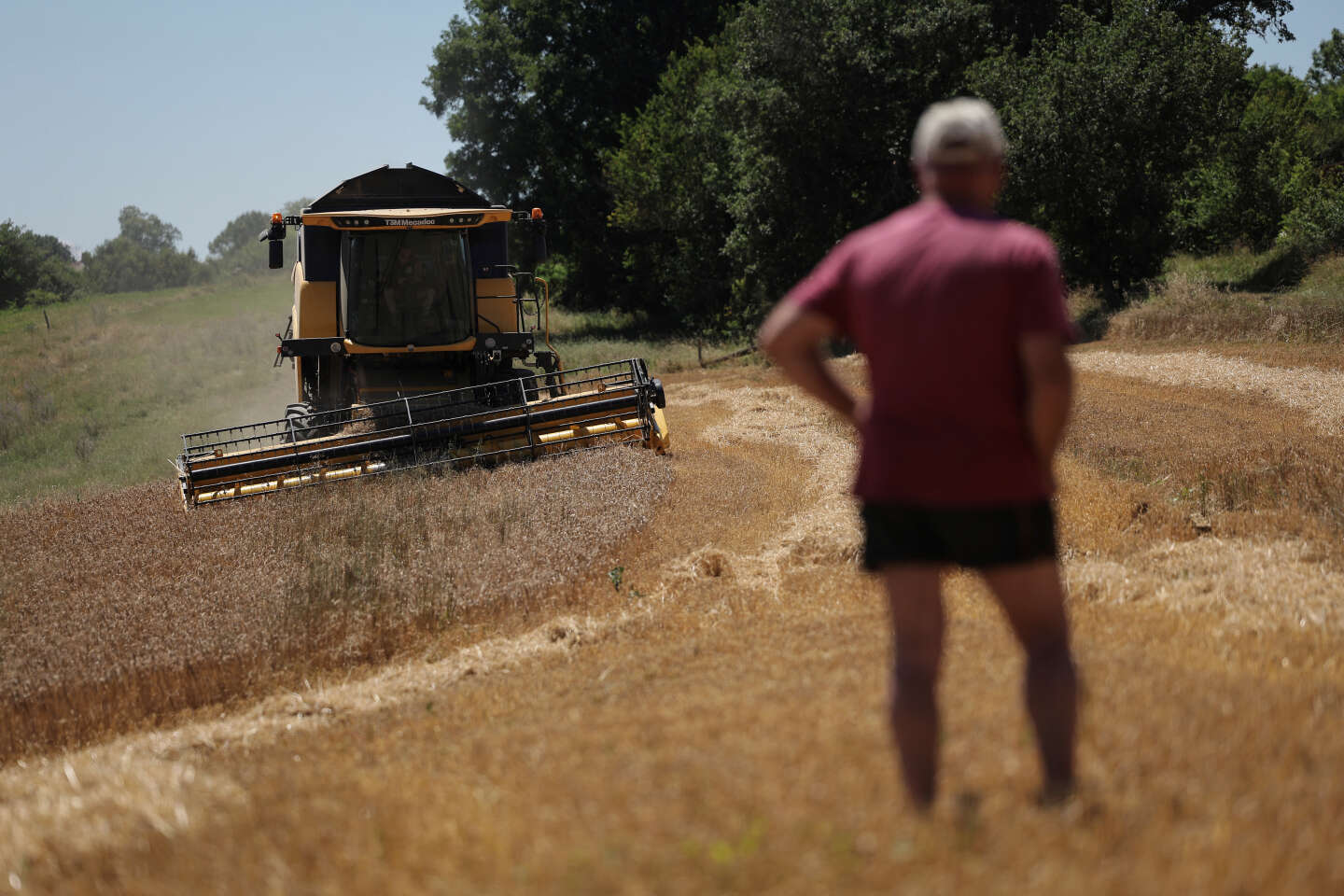With too much rain, morale plummets. This could be the saying of French cereal growers, who are struggling with too much rain this year. They are holding their breath because the harvest has just begun. Although it is still too early to know the final verdict, the forecasts are rather bleak. Arvalis and Intercéales therefore expect a 13% drop in soft wheat yields compared to 2023 to 64 quintals per hectare, according to data published on Friday, July 5.
Compared to the 10-year average, the decrease is 11%. However, the positive side is that the protein content of wheat would remain stable at 11.6%. This criterion is carefully monitored because it determines the quality of bread-making of soft wheat and its access to export markets. “This 2024 harvest, combined with end-of-season stocks, will allow the French cereal industry to ensure food sovereignty both for our country and for many countries around the world”assures Jean-François Loiseau, president of Intercéales.
The Ministry of Agriculture, for its part, examined winter barley in mid-June and was counting at this stage on a production decline of 11% over a year, to 8.6 million tons. Combine harvesters went into action in the winter barley fields in the last week of June. Just when the sun finally came out.
“A Losing Cocktail”
“Two months ago we thought we were very early and finally the harvest has started on normal dates”notes Benoît Piétrement, president of the board of specialists in large crops at FranceAgriMer and a cereal grower in the Marne. The same adjustment to the calendar for the milling of wheat, the harvest of which should begin between July 10 and 15.
“The weather has been really bad, with a losing cocktail of lack of light, excess water and disease pressure”alarms Arthur Portier, analyst at the company Argus Media France (formerly Agritel) and cereal producer between Seine-et-Marne and Oise, who also lends himself to the exercise of prognosis: “We expect a decline in winter barley yield of almost 15% compared to 2023. That is 6 tonnes per hectare compared to 7 tonnes in the previous year. » As for wheat production, it had already estimated in May that it would be below the 30 million tonne threshold, compared to 34.6 million tonnes in 2023.
“2024 will not be the year of the century”adds Mr. Piétrement who underlines “very strong heterogeneity, with areas where returns will be very good and others where they will be catastrophic,” before concluding: “Overall I would say that we will have a negative year, but that we are not immune to pleasant surprises. »
